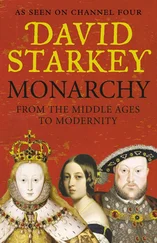In 482 we find Theoderic — the name is no longer ambiguous — ravaging the provinces of Macedonia, and Thessaly, and capturing the town of Larissa. He was no longer held in check by the able general Sabinian who had been murdered the year before. The Emperor decided to make a new agreement. Parts of Moesia and Dacia Ripensis were conceded to the Ostrogoths, and Theoderic was appointed Master of Soldiers (A.D. 483). 111In A.D. 484 he enjoyed the coveted distinction of giving his name to the year as consul, and he assisted Zeno against the rebel Illus. But a new breach soon followed. He devastated Thrace (A.D. 486) and marched on Constantinople (A.D. 487). Rhegium was occupied, Melantias was taken, and the capital once more threatened. But the intervention of his sister, 112who was at Zeno’s court, induced him to retire to his headquarters in Moesia, which he was soon to abandon for ever. The days of the Thracian period of Theoderic’s career were numbered.
§ 6. Theoderic’s Conquest of Italy (A.D. 489-493)
We have seen that there had been friction between the Emperor and his Viceroy in Italy, and that Odovacar had thoroughly defeated the Rugians whom Zeno had stirred up against him. The thought now occurred to Zeno or his advisers that he might at once punish Odovacar and deliver the Illyrian provinces from the menacing presence of the Ostrogoths by giving Theoderic a commission to supersede the ruler of Italy. Theoderic accepted the charge. A compact was made that (in the words of the chronicler) “in case Odovacar were conquered, Theoderic should, as a reward of his labours, rule in place of Odovacar, until Zeno came himself.” 113The last condition is simply a way of saying that Zeno reserved all the Imperial rights of sovranty.
At the head of his people, numbering perhaps about 100,000, 114Theoderic set forth from Moesia in the autumn of A.D. 488. Following the direct road to Italy, past Viminacium and Singidunum, he approached Sirmium, and here he was confronted by a formidable obstacle. This town was in the possession of the Gepids, who now blocked Theoderic’s path. The place was taken after fierce fighting, but the Goths passed on with their booty and the Gepids reoccupied it. The winter, spring, and summer of the following year were spent somewhere between Sirmium and the Italian borders, and the causes of this delay are unknown.
It was not till the end of August (A.D. 489) that, having crossed the Julian Alps, the Ostrogoths reached the river Sontius (Isonzo) and the struggle for Italy began. Of this memorable war we have only the most meagre outline. The result was decided within twelve months, but three and a half years were to elapse before the last resistance of Odovacar was broken down and Theoderic was completely master of Italy. 115
It was perhaps where the Sontius and the Frigidus meet that Theoderic found Odovacar in a carefully fortified camp, prepared to oppose his entry into Venetia. He had considerable forces, for besides his own army he had succeeded in enlisting foreign help. 116We are not told who his allies were; we can only guess that among them may have been the Burgundians, who, as we know, helped him at a later stage. The battle was fought on August 28; Odovacar was defeated and compelled to retreat. His next line of defence was on the Athesis (Adige), and he fortified himself in a camp close to Verona, with the river behind him. 117Here the second battle of the war was fought a month later (about Sept. 29) 118and resulted in a decisive victory for Theoderic. The carnage of Odovacar’s men is said to have been immense; but they fought desperately and the Ostrogothic losses were severe; 119the river was fed with corpses. The king himself fled to Ravenna. The greater part of the army, with Tufa who held the highest command, surrendered to Theoderic, who immediately proceeded to Milan. 120
Northern Italy was now at the feet of the Goth; Rome and Sicily were prepared to submit, and it looked as if nothing remained to complete the conquest but the capture of Ravenna. But the treachery of Tufa changed the situation. Theoderic imprudently trusted him, and sent him with his own troops and a few distinguished Ostrogoths against Odovacar. At Faventia (Faenza) he espoused again the cause of his old master and handed over to him the Goths, who were put in irons.
Theoderic made Ticinum (Pavia) his headquarters during the winter, and it is said that one of his motives for choosing this city was to cultivate the friendship of the old bishop Epiphanius, who had great influence with Odovacar. In the following year Odovacar was able to take the field again, to seize Cremona and Milan, and to blockade his adversary in Ticinum. At this juncture the Visigoths came to the help of the Ostrogoths and sent an army into Italy. The siege was raised and the decisive battle of the war was fought on the river Addua (Adda), in which Odovacar was utterly defeated (Aug. 11, A.D. 490). He fled for the second time to Ravenna. It was probably this victory that decided the Roman Senate to abandon the cause of Odovacar, and accept Theoderic. It made him master of Rome, southern Italy, and Sicily.
The agreement that Zeno made with Theoderic had been secret and unofficial. The Emperor did nothing directly to break off his relations with Odovacar. 121But Odovacar seems some time before the battle of the Addua to have courted a formal rupture. He created his son Thela a Caesar, and this was equivalent to denouncing his subordination to the Emperor and declaring Italy independent. 122He probably calculated that in the strained relations which then existed between the Italian Catholics and the East, on account of the ecclesiastical schism, the policy of cutting the rope which bound Italy to Constantinople would be welcomed at Rome and throughout the provinces. The senators may have been divided on this issue, but the battle of the Addua decided them as a body to “betray” Odovacar, 123and before the end of the year Festus, the princeps of the Senate, went to Constantinople to announce the success of Theoderic, and to arrange the conditions of the new Italian government.
Theoderic confidently believed that his task was now virtually finished. But the cause of his thrice-defeated enemy was not yet hopelessly lost. Tufa was still at large with troops at his command; and other unexpected difficulties beset the conqueror. The Burgundian king Gundobad sent an army into North Italy and laid waste the country. 124Theoderic had not only to drive the invaders out, but he had also to protect Sicily against the Vandals, who seized the opportunity of the war to attempt to recover it. Their attempt was frustrated and they were forced to surrender the fortress of Lilybaeum as well as all their claims to the island. 125
It seems to have been in the same year that Theoderic resorted to a terrible measure for destroying the military garrisons which held Italian towns for Odovacar. The Italian population was generally favourable to the cause of Theoderic, and secret orders were given to the citizens to slaughter the soldiers on a pre-arranged day. The pious panegyrist, who exultantly, but briefly, describes this measure and claims Providence as an accomplice, designates it as a sacrificial massacre”; 126and Theoderic doubtless considered that the treachery of his enemy’s army in surrendering and then deserting justified an unusual act of vengeance. The secret of the plot was well kept, and it seems to have been punctually executed. The result was equivalent to another victory in the field; and nothing now remained for Theoderic but to capture the last stronghold of his adversary, the marsh city of Honorius.
Читать дальше












